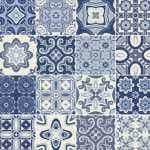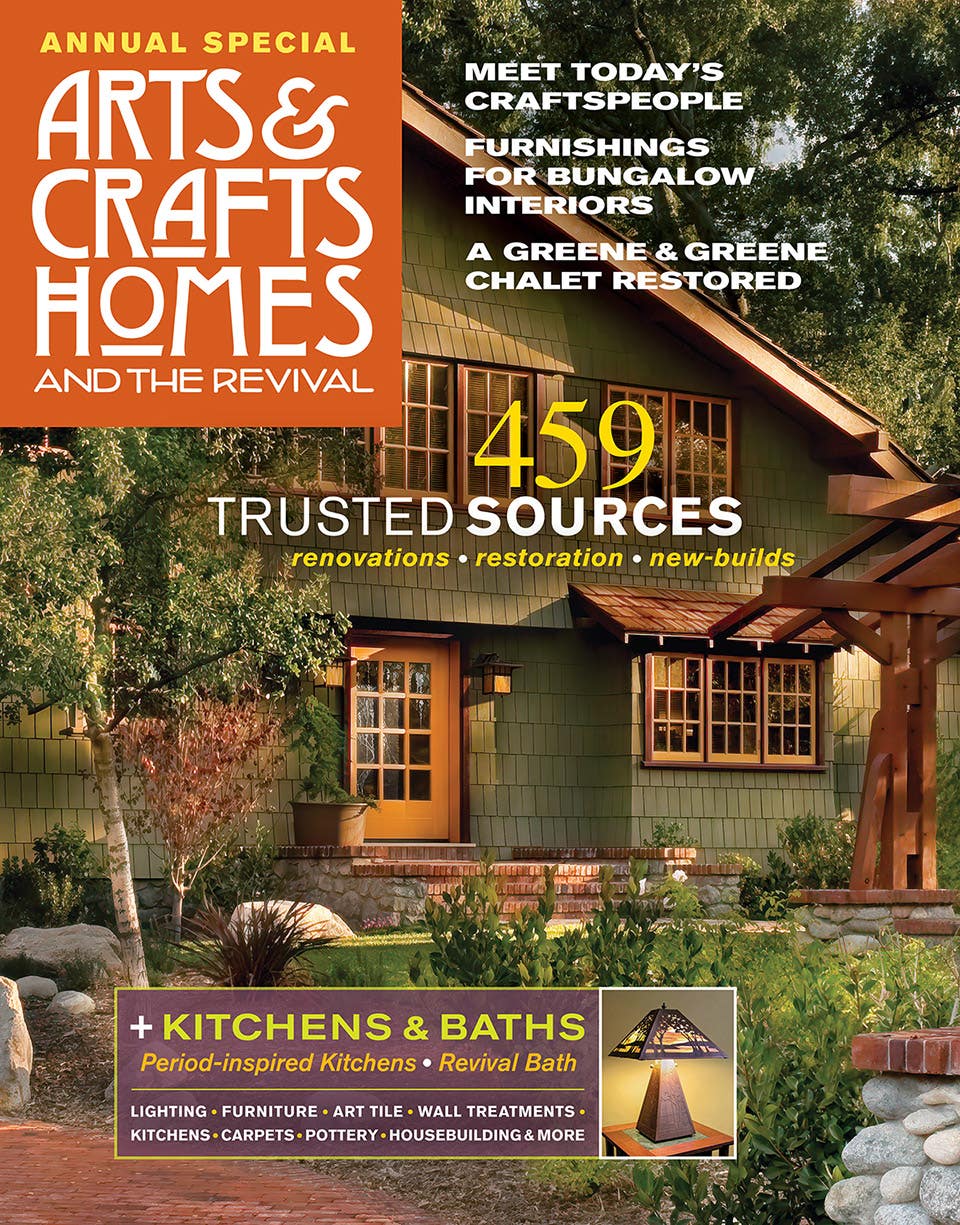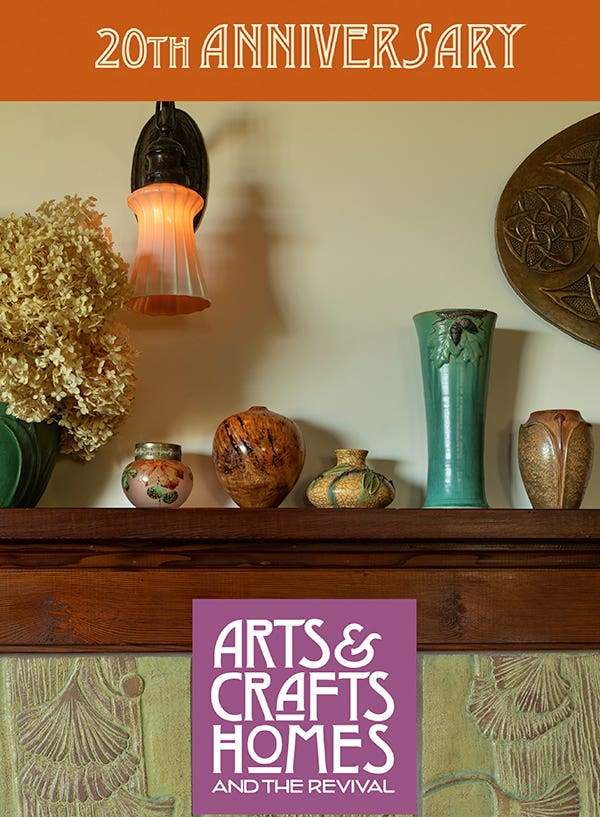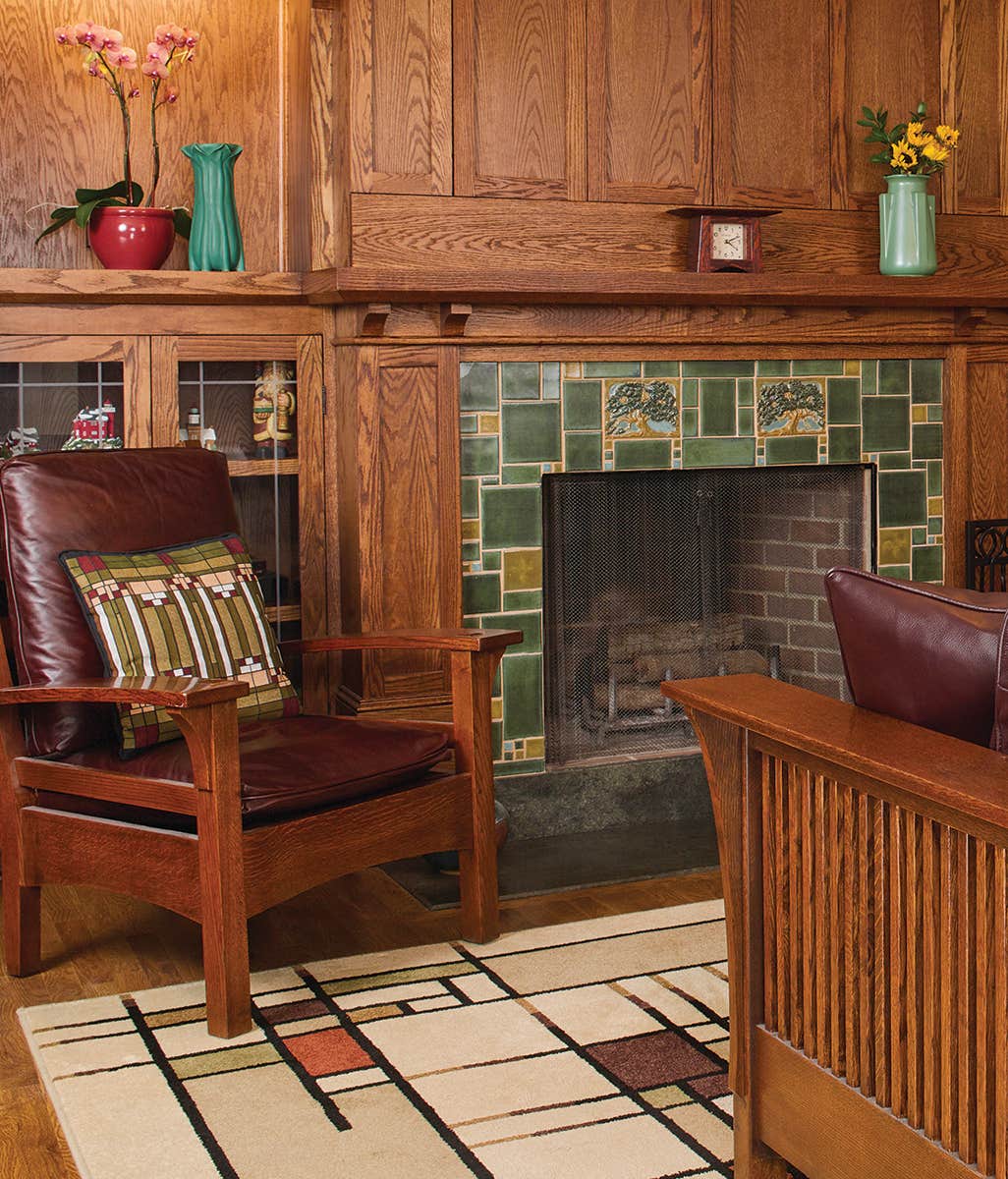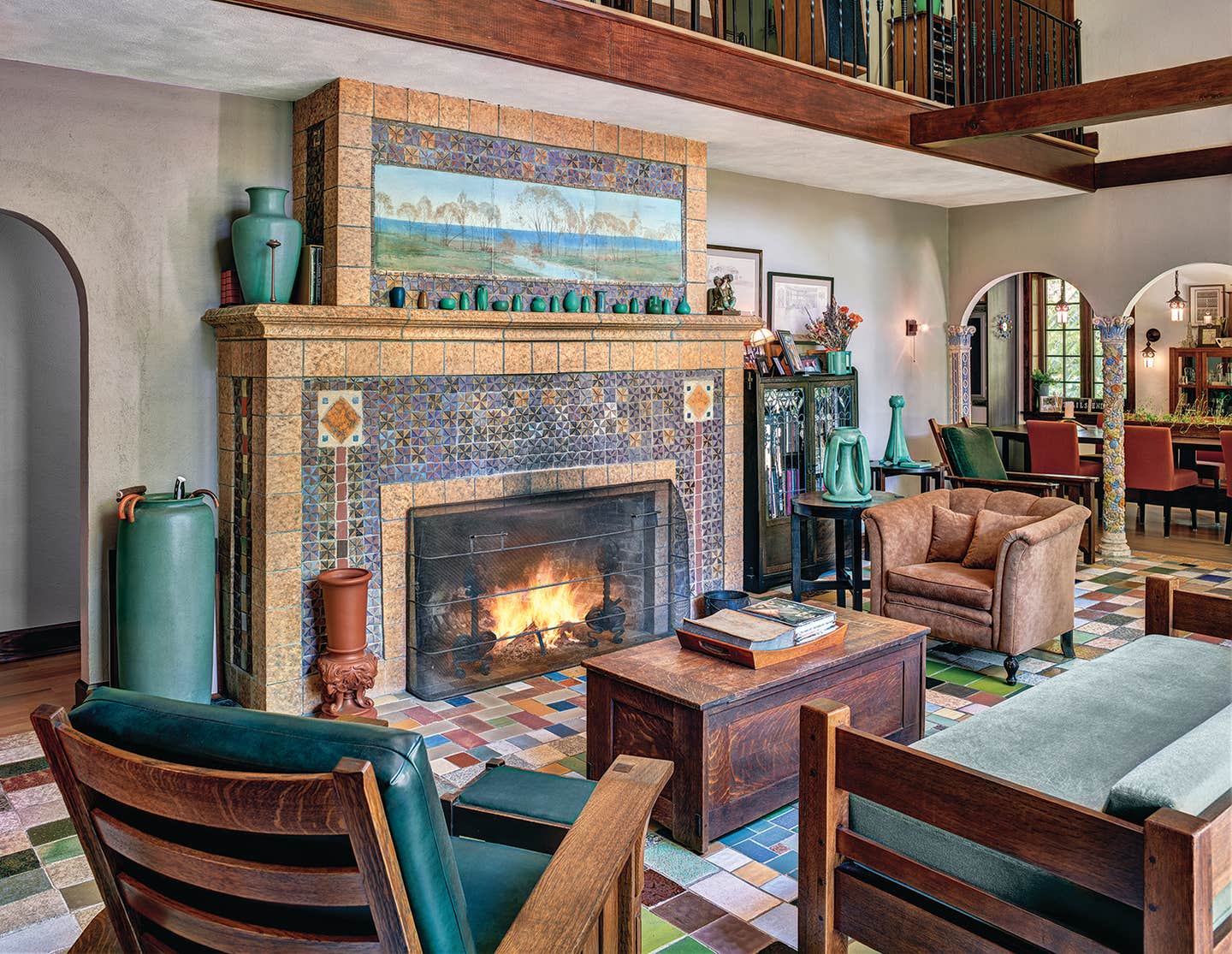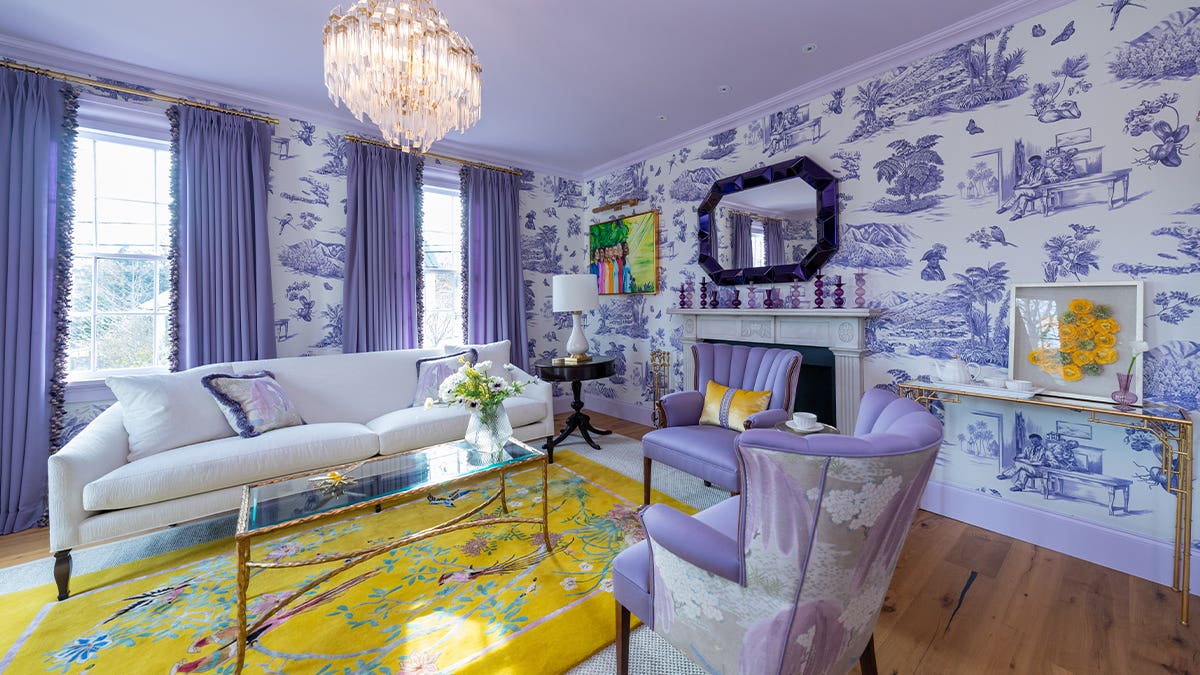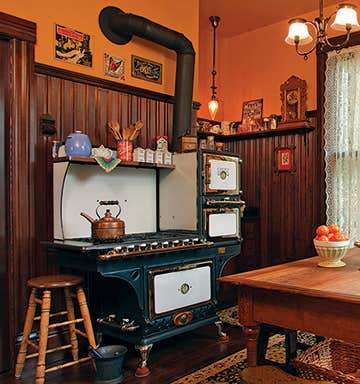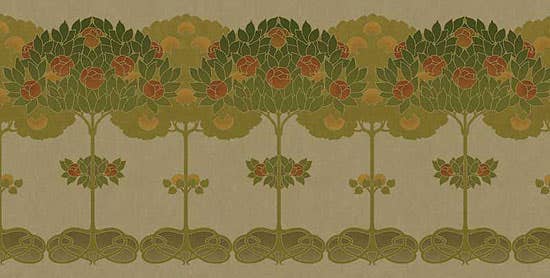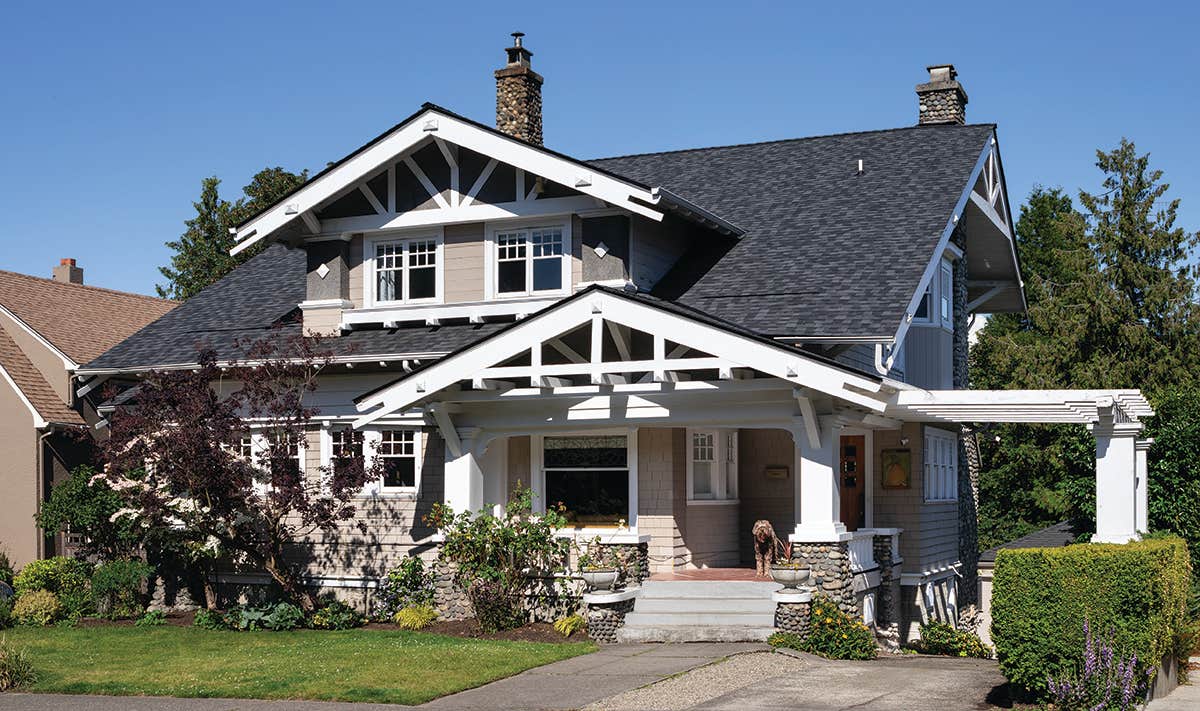For a cohesive scheme, especially one alluding to our decorating past, don’t overlook the period-friendly ceiling. Before Modernism, even residential ceilings were embellished with color, striping, cast-plaster ornaments, borders, specialty papers, and murals. Ceilings still were decorated between 1901 and 1945. Particularly in Arts & Crafts and English Tudor houses, main rooms often had beams along with subtle ornamental treatments.
In some rooms, the ceiling treatment played off the frieze, picking up its colors or repeating a motif. Complementary ceiling fill papers were light in tone and favored “natural” hues, such as limestone and sand colors, accented with eggplant, amber, and olive green.
After the First World War, European-influenced Romantic Revival house styles were built in the growing suburbs. Many walls and the occasional ceiling were troweled with textured plaster, to give an impression of age and patina. Ceilings were not universally monochromatic in this period, as they mostly were in Colonial Revival homes. Ceiling decoration was revived for Spanish Revival and Renaissance or Beaux Arts homes, where wood coffers, colored stains, painted decoration, and stenciling on or between beams were popular treatments. Tudor Revival houses had ceilings with heavy beams, or with “Jacobean” plaster featuring intricate strapwork. In libraries and dining rooms, panels between beams were painted with medieval or Tudor motifs, or covered in embossed leather or Lincrusta, or even fabric.
Box Beam Systems
From planbook bungalows to the Gamble House, houses of this period very often had a beamed ceiling or two. Beams typically appeared in dining rooms (along with a high wainscot), in libraries, and in living rooms. These were decorative rather than structural, alluding to ancient construction methods and low-ceilinged intimacy. The beams are not timbers but rather boards rabbeted together, leaving a hollow space. So-called box (or boxed) beams had many variations—in size, intersection plans, wood and finish, and details—but most were relatively simple and could be ordered from catalogs.
Some people have homes with original box beams intact, but for the rest, modern technology makes it easy to get the look. Evoba Wood Ceilings has systems made of grids of wooden panels and beams (available in nearly any finish to match existing woodwork). Barron Designs can help you make your own box beams. They supply faux-grained, high-density polyurethane beams as well as the real McCoy: wooden box beams made of reclaimed lumber. Your finish carpenter can build hollow beams to match the scale and any details already in the room.
Between The Beams
Chamfers were highlighted in a complementary paint color during the Victorian period, less often after 1910. Stenciling was common as a subtle border along beams, in stylized nature motifs: irises, a Glasgow rose, oak leaves and acorns, done in the blue-greys and browns of fieldstone, summer-squash yellow or zucchini green. Deeper tones included crimson, moss green, ochre, terra cotta, Pompeiian red, and indigo. Dining rooms had the most elaborate stencils.
When crossing beams create recessed panels, these may be shadowed or bordered at the edges—or hung with gilded burlap. Bradbury & Bradbury has a gilded faux-burlap paper for this purpose. In the 1910s, recesses were dark; by 1920, a lighter effect was in vogue.
Beam Talk
Border: A narrow band of ornament, as along ceiling beams.Box Beam “Faux” decorative beam built up from joined boards, as opposed to a solid structural beam. Wires were sometimes run in the boxes for beam lights. Multiple transecting beams lend a coffered effect.Chamfer: On a ceiling beam, a finished edge that has been beveled or angled off, usually at 45 degrees.Coffer: A sunken panel; a coffered ceiling is one with a grid of sunken and raised areas, in plaster, stone, or wood; generally now a decorative device.Stencil Repeating ornament applied in paint through a design cut out of a template.
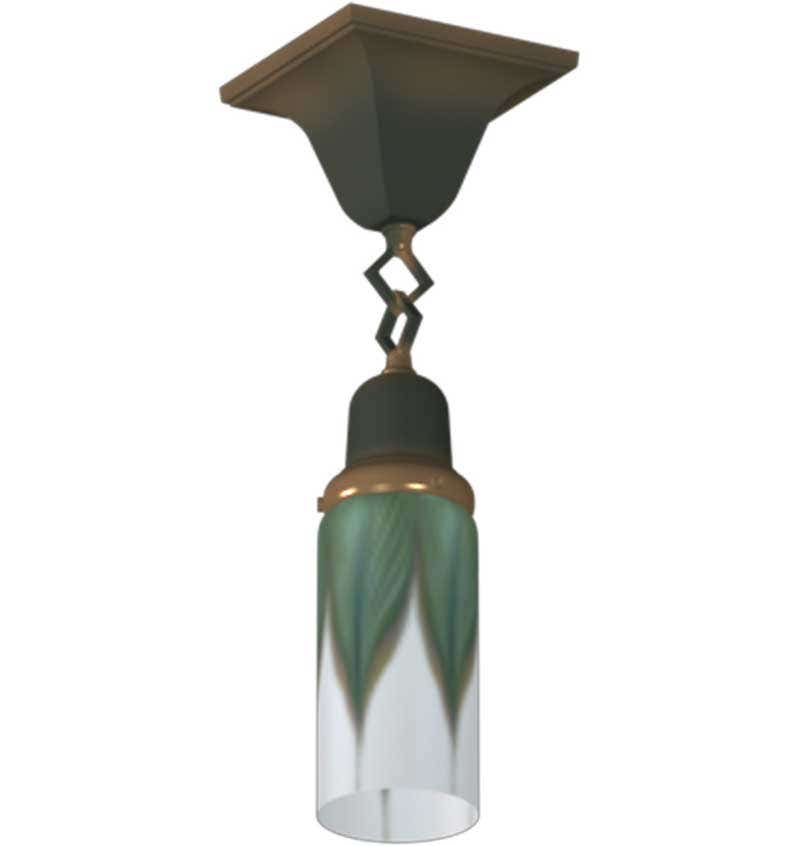
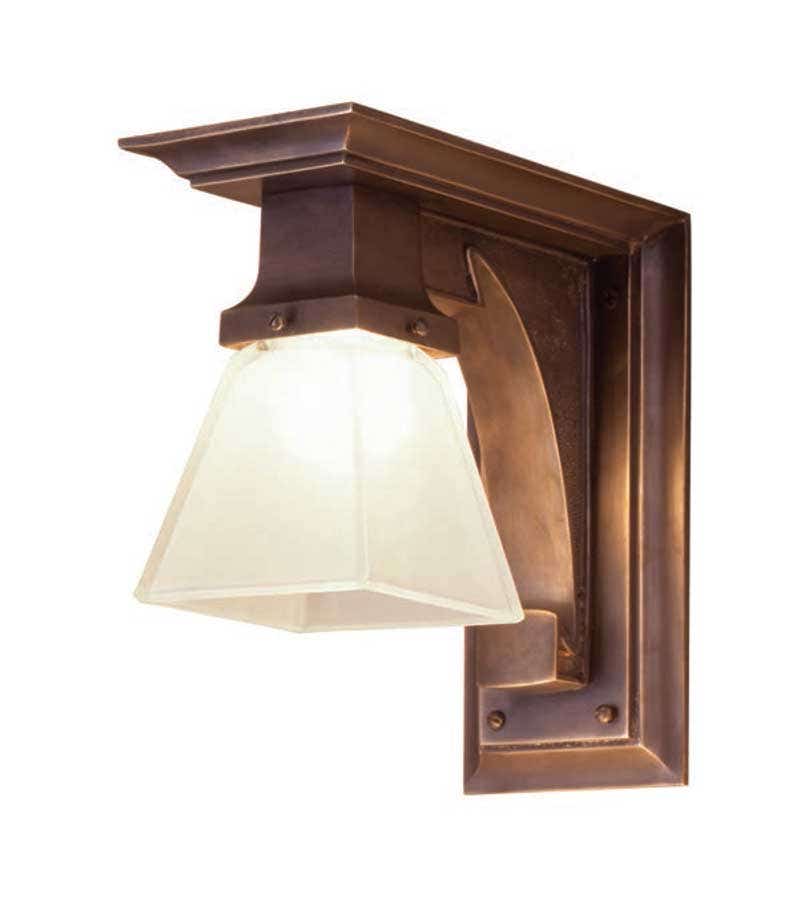
Patricia Poore is Editor-in-chief of Old House Journal and Arts & Crafts Homes, as well as editorial director at Active Interest Media’s Home Group, overseeing New Old House, Traditional Building, and special-interest publications.
Poore joined Old House Journal when it was a Brooklyn-brownstoner newsletter in the late 1970s. She became owner and publisher and, except for the years 2002–2013, has been its editor. Poore founded the magazines Old-House Interiors (1995–2013) and Early Homes (2004–2017); their content is now available online and folded into Old-House Journal’s wider coverage. Poore also created GARBAGE magazine (1989–1994), the first unaffiliated environmental consumer magazine.
Poore has participated, hands-on, in several restorations, including her own homes: a 1911 brownstone in Park Slope, Brooklyn, and a 1904 Tudor–Shingle Style house in Gloucester, Massachusetts, where she brought up her boys and their wonderful dogs.
